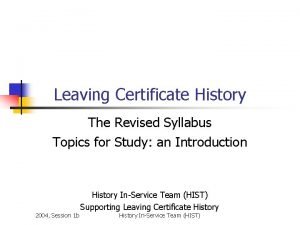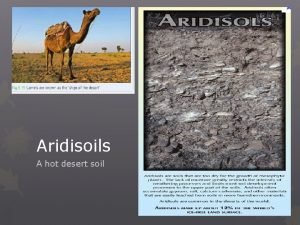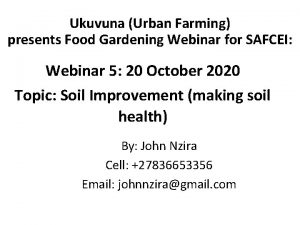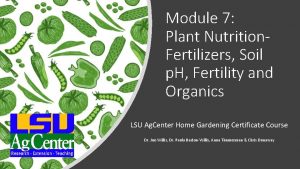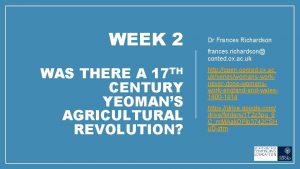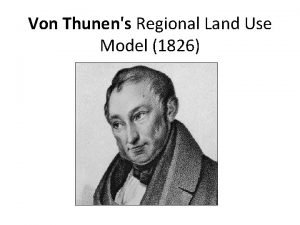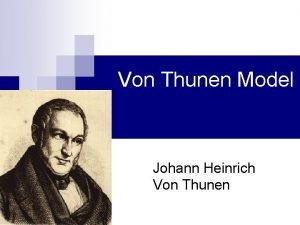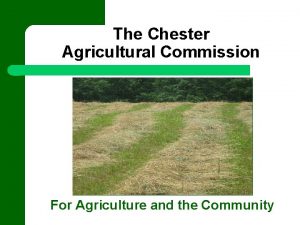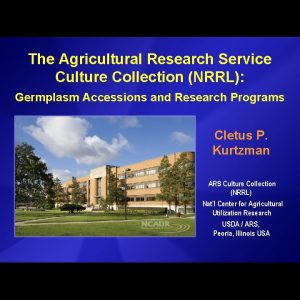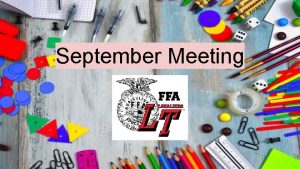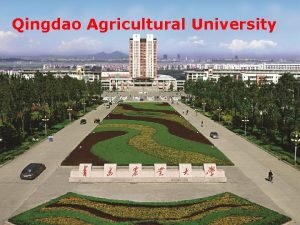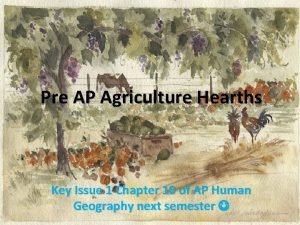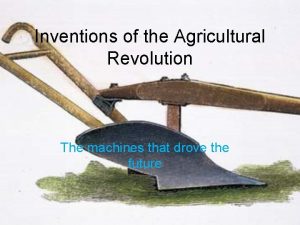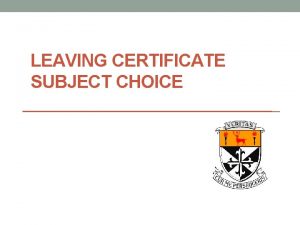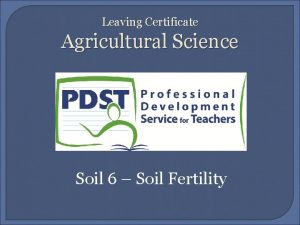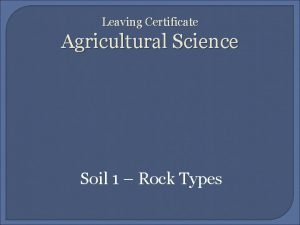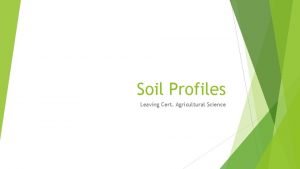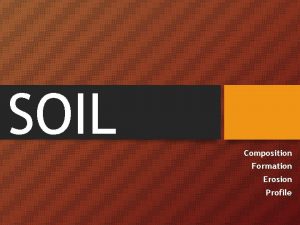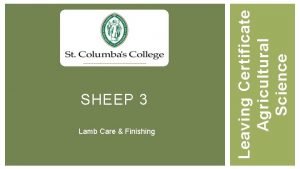Leaving Certificate Agricultural Science Soil 3 Soil Composition
























- Slides: 24

Leaving Certificate Agricultural Science Soil 3 – Soil Composition

Composition of Soils The ideal composition of soil, 25% Air, 25 % H 2 O, 45% Mineral Matter 5% Organic Matter.

Soil Structure

Soil Texture Particles � The texture of a soil depends on the relative mixture of sand, silt and clay particles. � The most common method of classifying soils is based on the percentage clay in the oil. � E. g. Soils that contain 0 – 5 % clay are known as sandy soils.

Soil Texture � The particles in the soil are classed on their size. � Anything over 2 mm in diameter is referred to as gravel, pebbles or stones. � Particles from 2 mm to 0. 5 mm are called sand particles. � From 0. 5 mm to 0. 002 mm are called silt particles. � Any particle under 0. 002 mm is referred to as clay.


Soil Texture � Sand Silt are similar in composition and are formed by physical breakdown of rocks. � Clay particles are formed by both physical and chemical breakdown of rocks.

Soil Texture � As mentioned before soils are classified by the amount of clay in the soil. • • • 0 – 5 % Clay Sandy Soil 5 – 10 % Clay Sandy Loam 10 – 20 % Loam 20 – 30 % Clay Loam 30 – 40 % Clay Soil 40 % Up Heavy Clay Soil � A more common and accurate way at looking at the type of soil is by using a soil triangle.

Soil Triangle

Mineral Matter Mineral matter is composed of inert solids, gravel, coarse and fine sand, and silt and clay particles. These different names come about because of the size of each is different.

Mineral Matter � Soil Texture Gravel > 2 mm Coarse Sand ~ 2 mm Fine Sand < 0. 2 mm Silt Clay < 0. 02 mm <0. 002 mm

Experiment: � The % of each particle in a soil can be estimated using sieves. 1. 2. 3. 4. A known weight of a dry soil particle is placed in the top sieve. Shake vigorously Weigh the clay fraction Result: Clay X Total 100 = 1 % Clay


The Clay Particle � The clay particle is the most important soil particle as it is the only particle, which is charged. � It holds a negative charge and is called an anion. � It is able to attract positively charged ions towards it (cations) � When lime is spread on land it replenishes the Ca 2+ (calcium) in the soil and flocculation occurs.


Flocculation � This is the gathering together of clay particles forming aggregates � It is responsible for giving soil its structure. � A well-flocculated soil will have a desirable crumb structure. � It will be friable.

Flocculation � An undesirable structure is referred to as being plastic or blocky. � Lime promotes flocculation. � It is recommended that it be spread on average every 5 years. � Flocculation in soil promotes aeration.


Friability When a soil sample is rubbed between you fingers it breaks up into crumbs.

Cation Exchange Capacity C. E. C. of a soil. This is the ability of clay articles to swap positively charged ions (cations) from one to another.


Generalised Soil Types Sandy Soils � Have large air holes. � Free Draining soils � Is easy to work with (light) � Dries out quickly � Minerals are easily leached. � Poor soil with little or no nutrients. � Is a warm soil.

Generalised Soil Types Clay Soils � Holds water easily � This protects from leaching of minerals. � Is naturally fertile soil. � Very poor drainage, which can lead to water logging � Is a cold soil.

Generalised Soil Types Loam Soils � Intermediate characteristics of both clay and sandy soils. � More advantages and fewer disadvantages than sandy or clay soils. � A good mixture is 40 % Sand, 40 % Silt and 20 % clay. � While the nature of soil depends on the particle composition, the amount of humus in the soil is also a major factor.
 Leaving cert history syllabus
Leaving cert history syllabus Primary leaving certificate
Primary leaving certificate Leaving certificate
Leaving certificate Paris basin map
Paris basin map My favorite subject is english because
My favorite subject is english because Pie chart of soil
Pie chart of soil Desert soil layers
Desert soil layers Soil characteristic
Soil characteristic Apes soil frq
Apes soil frq Living soil vs dead soil
Living soil vs dead soil Four major spheres of the earth
Four major spheres of the earth Computer science certificate princeton
Computer science certificate princeton Soil colloids ppt
Soil colloids ppt Natural fertilizer disadvantages
Natural fertilizer disadvantages The agricultural revolution
The agricultural revolution Von thunen 1826
Von thunen 1826 Milkshed ap human geography
Milkshed ap human geography Chester agricultural center
Chester agricultural center Agricultural research service culture collection
Agricultural research service culture collection To practice brotherhood
To practice brotherhood Qingdao agricultural university
Qingdao agricultural university Agricultural hearth
Agricultural hearth National commission on farmers chairman
National commission on farmers chairman Ffa pledge to practice brotherhood
Ffa pledge to practice brotherhood Agricultural revolution inventions
Agricultural revolution inventions
